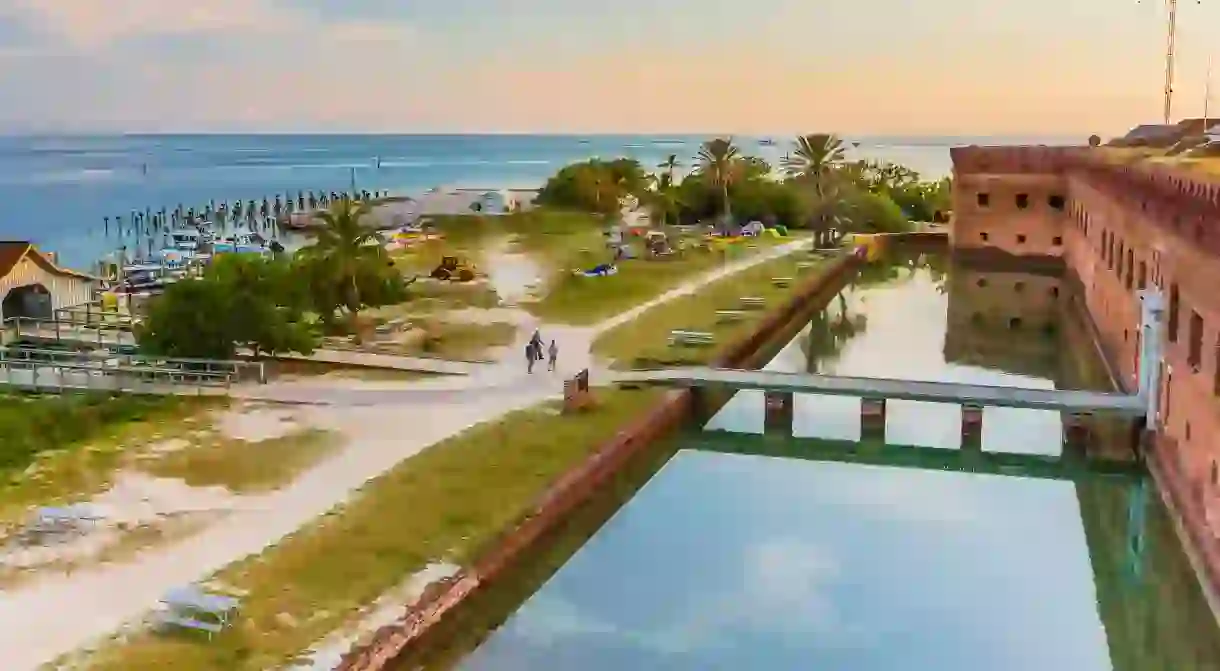Stunning National Parks to Visit in Florida Before You Die

The geographical location and warm subtropical climate of Florida make for unique ecological phenomena, including the Everglades and estuaries that are home to thousands of species of plants and animals. There are hundreds of miles of coastline bordering both the Atlantic Ocean and the Gulf of Mexico, as well as thousands of acres covered in vast swamps and forest. To help narrow down your choice, here is a guide to which of Florida’s stunning national parks you simply have to visit.
Did you know – Culture Trip now does bookable, small-group trips? Pick from authentic, immersive Epic Trips, compact and action-packed Mini Trips and sparkling, expansive Sailing Trips.
Biscayne National Park

With 95% of its 173,000 acres (70,000ha) covered by water, Biscayne National Park requires some planning to make the most of a visit. Being on or in the water is the best way to experience the park. We recommend planning a diving trip if you enjoy getting up close and personal with the fish and coral reefs. Since Biscayne National Park protects four distinct ecosystems (the shoreline mangrove swamp, the shallow waters of Biscayne Bay, the coral limestone keys and the offshore Florida Reef), we must ask you to be respectful on your journey. If you only have a short while and a boat is not available, the Convoy Point area offers a variety of land-based and indoor opportunities to get to know the park. Check the park’s calendar for other opportunities.
Dry Tortugas National Park

Almost 70mi (113km) west of Key West lies the remote Dry Tortugas National Park. The 100sqmi (260sqkm) park is mostly open water with seven small islands and protected reefs. The park has both cultural and ecological significance; you can enjoy dramatic landscapes and discover the history of Fort Jefferson, or go explore underwater resources including beautiful reefs, marine life and shipwrecks. Accessible only by boat or seaplane, the park is not easily reached (which is good for the preservation of the park). Make sure to plan ahead if you are going to charter a boat or seaplane; you won’t want to miss the picturesque blue waters, coral reefs, marine life and the vast assortment of birds that frequent the area.
Everglades National Park

Everglades National Park is the largest tropical wilderness in the United States. Believe us, there is more to this swampland than initially meets the eye. The park offers many amazing opportunities to learn and experience new kinds of wildlife that are unique to Florida. Having been hired to protect the fragile ecosystem of the everglades, the guardians of this National Park are doing their best to preserve the beauty and purity of this majestic wonder.
We recommend an encounter with the Seminole Tribe of Florida, who have made this region their home for many generations. Another beautiful place to visit in the Everglades National Park is Shark Valley in western Miami-Dade County. Shark Valley, which is basically a geological depression at the head of the Shark River Slough, offers miles of expansive trails perfect for hiking and biking.
Florida State Parks
Having covered the three main geographical areas that encompass Florida’s National Parks, we though we’d mention a few smaller, yet equally beautiful, state parks.
Paynes Prairie Preserve State Park

A good place to start is Paynes Prairie Preserve State Park (we know, what a tongue twister). Encompassing a 21,000-acre (8,500ha) savannah in Micanopy, Florida (south of Gainesville), Paynes Prairie Preserve is a U.S. National Natural Landmark. Come here to see wild horses, alligators, numerous species of birds and, if you’re extremely lucky, wild bison!
Blue Spring State Park

Another state park that should be on your radar is Blue Spring State Park. This park covers more than 2,600 acres (1,052ha), including the largest spring on St. John’s River. Blue Spring presents a unique opportunity to see the winter home to a growing population of West Indian Manatees. The spring’s crystal-clear, 73F (23C) water can be enjoyed by swimmers, snorkelers and certified scuba divers. Fishing, canoeing and boating can also be enjoyed along St. John’s River.
Devil’s Millhopper Geological State Park

Lastly, we suggest a trip to the Devil’s Millhopper Geological State Park in Gainesville. It is home to a 100ft (30m) limestone sinkhole that displays geological strata going back millions of years, along with the ecosystem that formed around it. Devil’s Millhopper is a National Natural Landmark that has been visited by curious travelers since the early 1880s and is a great place to enjoy a nice cold swim, if you’re brave enough.













